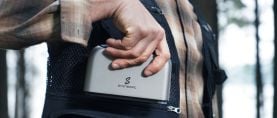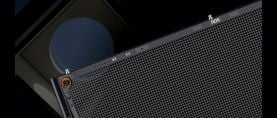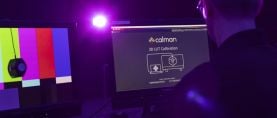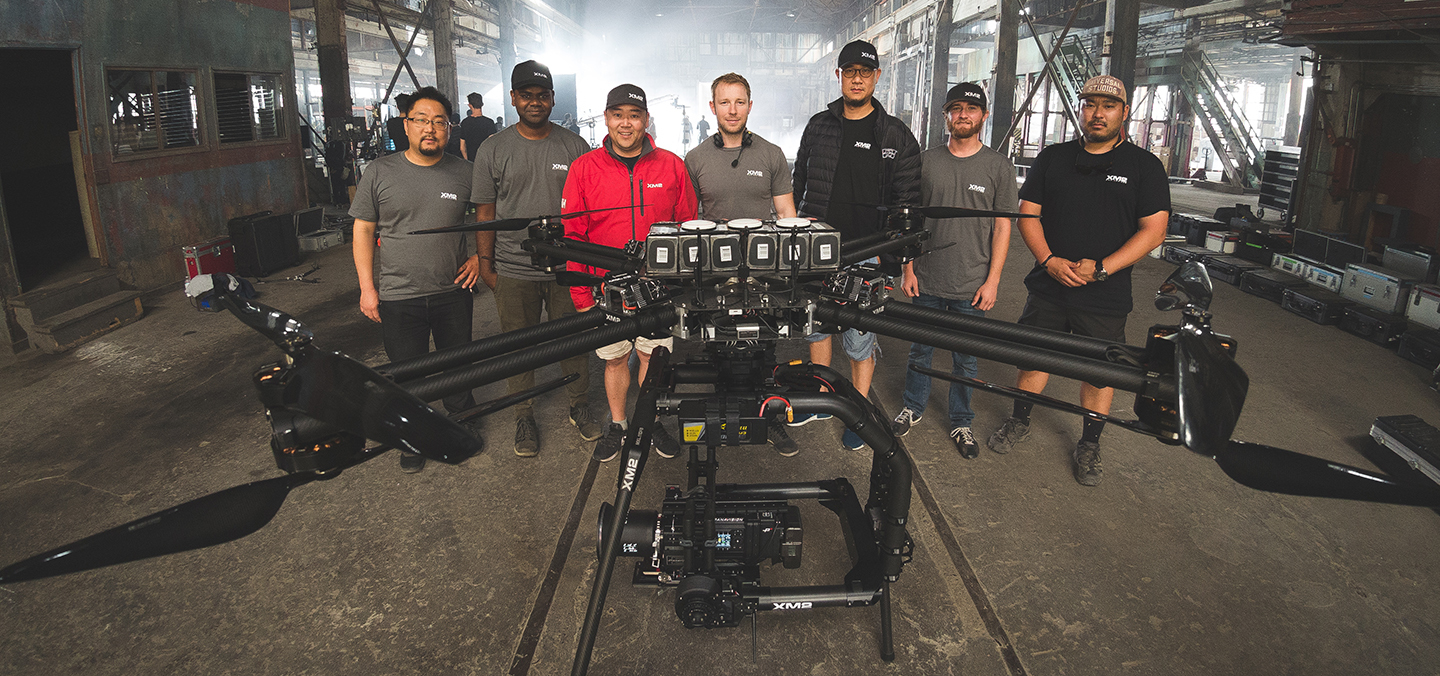
XM2 Reaches New Heights with Sierra Drone
The global aerial-cinematography company unveiled the Sierra heavy-lift drone and new leadership.
The global aerial-cinematography company unveiled the Sierra heavy-lift drone and announced the hiring of veteran camera and Steadicam operator Chris Haarhoff as CEO of the company’s North America operations.
As a global company, XM2 comprises three business categories: Aerial, which supplies drone services to productions; Labs, which conducts the company’s research and development; and a Store through which XM2 sells aircraft and components. The global operation is overseen by CEO Stephen Oh (pictured above, wearing red), COO Aidan Kelly and CTO Luke Annells. “The three of us started this venture,” says Oh. “We started building our own drones and gimbals, and it took off from there.”
Their shared interest in the drone arena grew naturally out of their initial passion for flying custom radio-controlled helicopters. Oh also brought with him a background in film production, where he’d worked as a producer beginning in the mid-1990s before transitioning into advertising. XM2 was launched as a multimedia agency, then shifted its focus to drone cinematography in 2013.
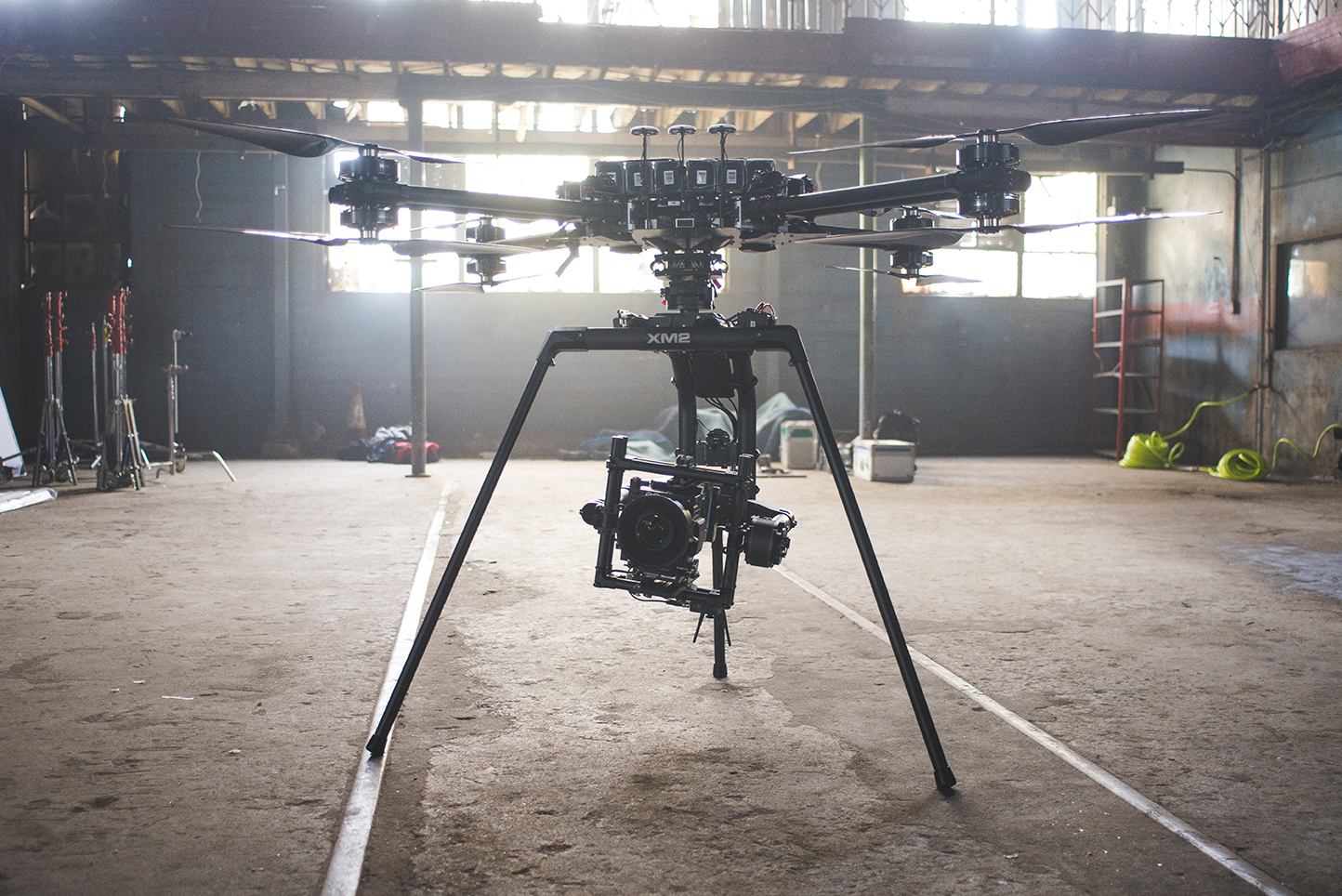
XM2 designs and builds its proprietary drones and stabilizers in-house at its Melbourne, Australia, headquarters. The company has rapidly expanded into other markets, with offices in Los Angeles and Atlanta in the United States, as well as Gold Coast in Australia, Queenstown in New Zealand, and Seoul in South Korea, with a potential office in London, England coming soon. Each office employs local staff made up of experienced industry personnel.
Multitasking is central to XM2’s ethos, with everyone wearing multiple hats in order to understand what’s needed by productions and how XM2 can deliver it. For example, Oh doubles as XM2’s chief aerial cinematographer and Annells as chief pilot. “Our people in the field are the same ones designing and building the drones,” says Oh. “Because we’re in the field, we fully understand what needs to be designed. You can make an aircraft, but if you can’t take it through the door of your hotel room, it’s useless. If you can’t put it onto a commercial airline, you can’t transport it quickly. If each box weighs more than 55 pounds, then you’ve got excess-baggage issues. And if we’re shooting and then we need to move five miles down the road, we’re going to break it down, put it in the truck, then put it back together, and that takes time — so our drones’ arms detach without any tools. Everything’s been designed with real productions in mind.
“It’s super-important that we’re actually shooting,” he continues. “If I’m not on set, I’m not going to learn what’s needed, and then we’ll never develop this stuff.”
XM2 has notched credits on features including Lion, Pirates of the Caribbean: Dead Men Tell No Tales (AC June ’17), Thor: Ragnarok, Pacific Rim: Uprising and the upcoming Aquaman; series including Westworld; and an array of commercials. Oh points to Dead Men Tell No Tales as “the start of our journey, really. It put us on the map.”
Prior to landing that job, XM2 had formed a partnership with Panavision in the Asia-Pacific region. Paul Jackson, the managing director at Panavision Asia, introduced Oh to cinematographer Paul Cameron, ASC, who was in preproduction for Dead Men Tell No Tales. With a mere three weeks before the start of principal photography, XM2 developed the Romeo drone (pictured below), which boasted an 88-pound maximum takeoff weight — significantly outsizing the available 55-pound-maximum drones that then existed — that allowed it to meet the production’s desire to only shoot with Arri’s Alexa camera systems.
“We had so many shots in the show, and that was because the camera was actually equivalent to what they were using, without a resolution loss that would cost them money afterwards to make seamless.”

Given that this was prior to the release of Arri’s Alexa Mini, the Romeo flew an Alexa M, with the optical head underslung while the tethered recording unit was fixed atop the drone. Following an initial agreement that XM2 would be on the shoot for three weeks, Oh estimates the company remained for approximately six months of work. “When they came up with a shot they hadn’t planned for and the other camera-support equipment couldn’t set up in time, they got us to do it. We had so many shots in the show, and that was because the camera was actually equivalent to what they were using, without a resolution loss that would cost them money afterwards to make seamless.”
Other advancements have followed. For Pacific Rim: Uprising, Oh and his team took advantage of their ability to mount a camera on the top of the drone, above the rotors, for an upward-looking aerial perspective. “It’s a completely different framing,” says Oh. “On a helicopter, you can’t look up because the rotors are there.” The technique was used extensively in capturing plates for scenes involving the movie’s massive robots and monsters.
“We do a lot of VFX now,” says Oh. This work has actually been getting XM2 involved in productions at the earliest stages, with services including LIDAR data capture, which produces 3D representations of a given target using a pulsed laser to measure distance, and photogrammetry, which produces textured models from which location measurement and volumetric data can be gathered. “You can make your previs out of it,” Oh offers, “and you can look at it to measure and realize, ‘Ah, I can’t back all the trucks up there.’ Directors can see what a location looks like without ever going there.”
“They didn’t want to shoot digital at all. And the challenge with film is there’s a weight displacement when the film goes from one spool to the other, and that plays with the balancing of the gimbal.”
XM2 also offers independent two-head operation from a single drone — two cameras are rigged from one drone, with an operator assigned for each camera, allowing for two focal lengths or two separate moves from a shared vantage when shooting one-off scenarios such as car stunts. The company has also flown lights from its drones, as well as 360-degree cameras — one above the rotors and one below — for VR applications.
Following the successful collaboration on Dead Men Tell No Tales, Cameron brought XM2 out for the HBO series Westworld. “Every camera on [the Westworld] set shoots film,” Oh recounts. “They didn’t want to shoot digital at all. And the challenge with film is there’s a weight displacement when the film goes from one spool to the other, and that plays with the balancing of the gimbal. We resolved those issues and did lots of shooting with the Arri 235 with a 200-foot mag on it.
“Paul’s my personal mentor,” Oh continues. “He’s a visionary. He said, ‘You know, there are going to be bigger cameras coming soon. You need to fly those things.’” When Arri Rental soon thereafter announced its Alexa 65, Oh remembers Cameron telling him, “‘If you can get that system up in the sky, it’d be cool.’ So we said, ‘Let’s make that aircraft.’”
The result is the Sierra, which offers a payload capacity of 65 pounds and a maximum takeoff weight of 150 pounds. The system can carry the Alexa 65 as well as “almost any camera and lens package available,” says Oh, “including the Arri 435” — and the camera can be configured either above or below the rotors.
“Cranes can reach up to 70 feet, while a helicopter’s minimum heights are limited, particularly in urban environments,” he continues. “The Sierra fills the gap in height between cranes and helicopters without compromising the image. There’s no resolution loss when using this drone.”
This is because the same camera and lens package used by the main unit can fly on the Sierra. “We can even leave the viewfinder on there,” Oh says. “The whole camera system can come off the Sierra and go straight onto a dolly or Technocrane.” This ability to use the same camera and lenses as the main unit is a significant boon for the production overall, says Oh, saving on the equipment that needs to be rented, prepped and insured, and in turn trimming all of those costs.
“What Panavision’s done is a massive breakthrough — and it was great to get our company’s initial, X, onto the lens.”
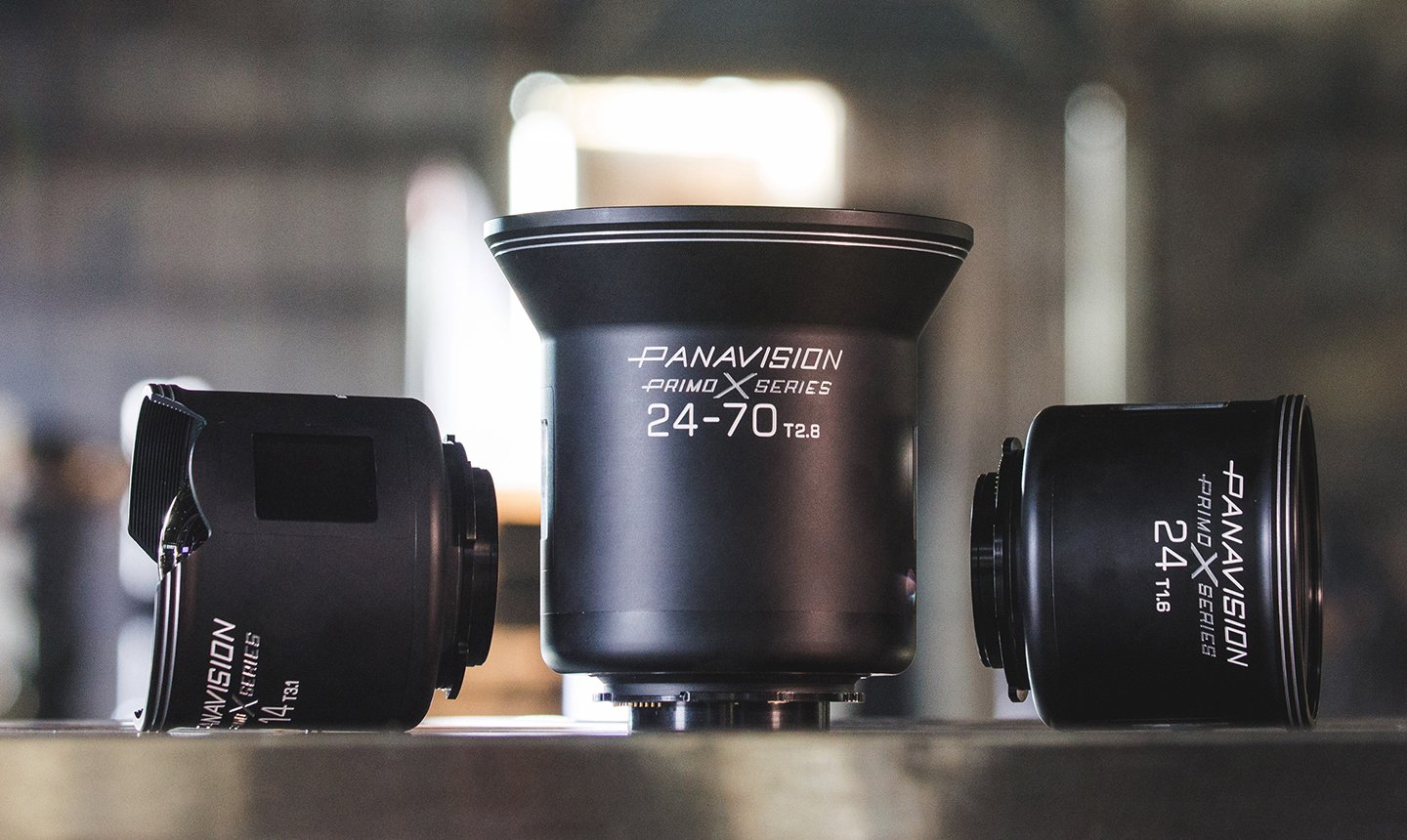
The Sierra was recently put through its paces, flying a Millennium DXL camera in an indoor location for a video that was used to announce Panavision’s Primo X series of lenses (pictured above), which have been specially designed for use on drones and gimbals. Launching with two primes — 14mm (T3.1) and 24mm (T1.6) — and a 24-70mm (T2.8) zoom, the Primo X lenses are fully sealed, weatherproof, aerodynamic, and balanced to be able to easily maintain a proper center of gravity.
Oh explains that XM2 and Panavision “worked together on the development of these lenses. The motors that drive the lens are all at the root of the lens, so it’s better for the balancing on the gimbal. It will be used for drones, but it’s also for Steadicam, or Movi operators, or a helicopter mount — anything that needs balancing. And all the motors are internal; there are no gears on the outside. This helps with aerodynamics, and it makes the lens so much lighter. It would even help when you’re shooting off the shoulder. What Panavision’s done is a massive breakthrough — and it was great to get our company’s initial, X, onto the lens.”
In his new position, Haarhoff — whose credits include Casino, Saving Private Ryan, Almost Famous, Her and Birdman or (The Unexpected Virtue of Ignorance) — has climbed aboard to help navigate XM2 through its expanding portfolio. Haarhoff first encountered XM2 on Dead Men Tell No Tales, and he again worked with the company on Pacific Rim: Uprising and Westworld.
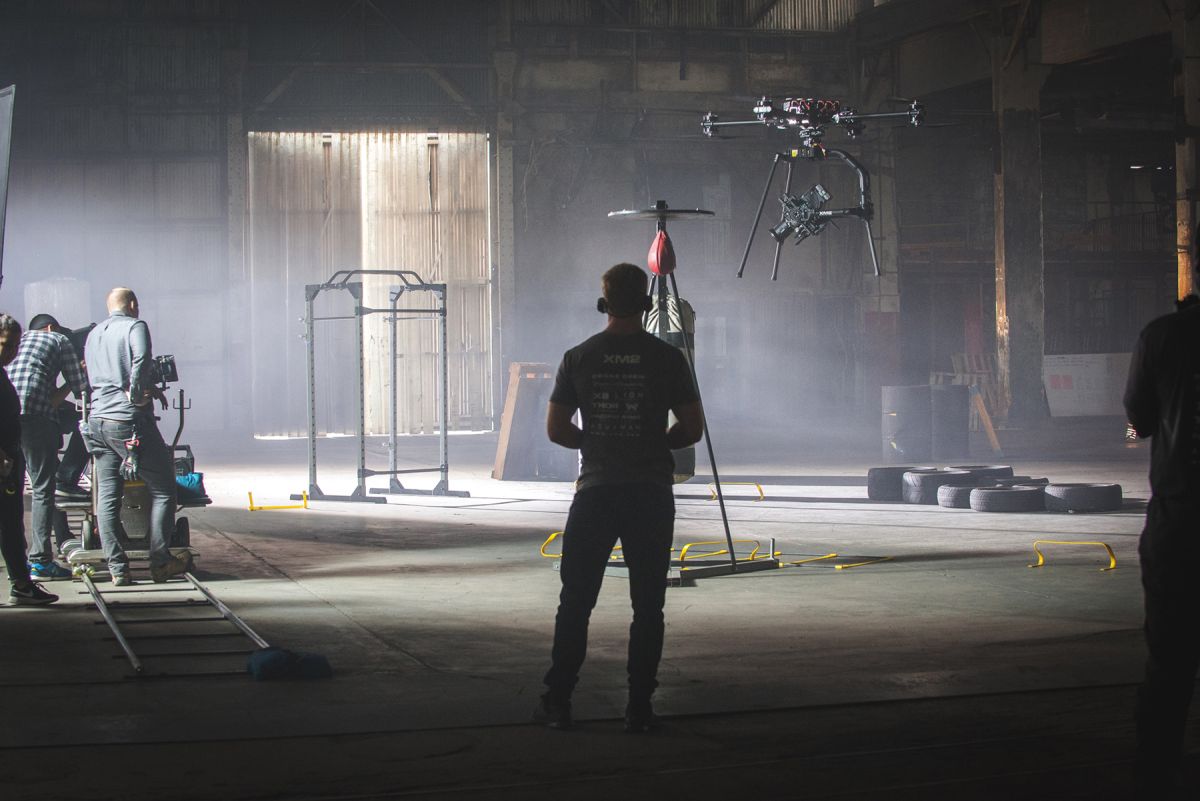
“On set is where we actually get to show these systems to people. Getting out there and showing this tech is important, and it teaches us what we need to make next.”
Oh says that operators of Haarhoff’s caliber, because of their experience operating remote heads, pick up drone operating “very quickly. And they’re trusted by productions. They know what they’re doing, they know how the hierarchy works, they know what to say to a producer and what to do on set.”
Haarhoff’s responsibilities with XM2 won’t take away from his work on set. “It’s important to be engaged in that,” says Oh. “That’s our passion. On set is where we actually get to show these systems to people. Getting out there and showing this tech is important, and it teaches us what we need to make next.”
“The classic CEO position as defined in a regular company does not really apply here,” Haarhoff adds. “As a company, we all multitask. Everybody has multiple jobs, and they’ll still chip in more. So as the CEO in North America, I’ll be attracting other operators into our fold, and when it comes time for moving sandbags, that will be my job as well. That’s how we do it, and we cover a lot of ground that way.
“I’ve got to say, this kind of intersection of technology and ability doesn’t come along very often,” Haarhoff continues. “We’re at a very fortunate time to see the language expanding; I think this period will stand as a time when technology really caught up and improved the image for everybody. It’s an exciting time, and it’s going to be fun.”
Stay up to date with American Cinematographer on Facebook, Instagram and Twitter.

